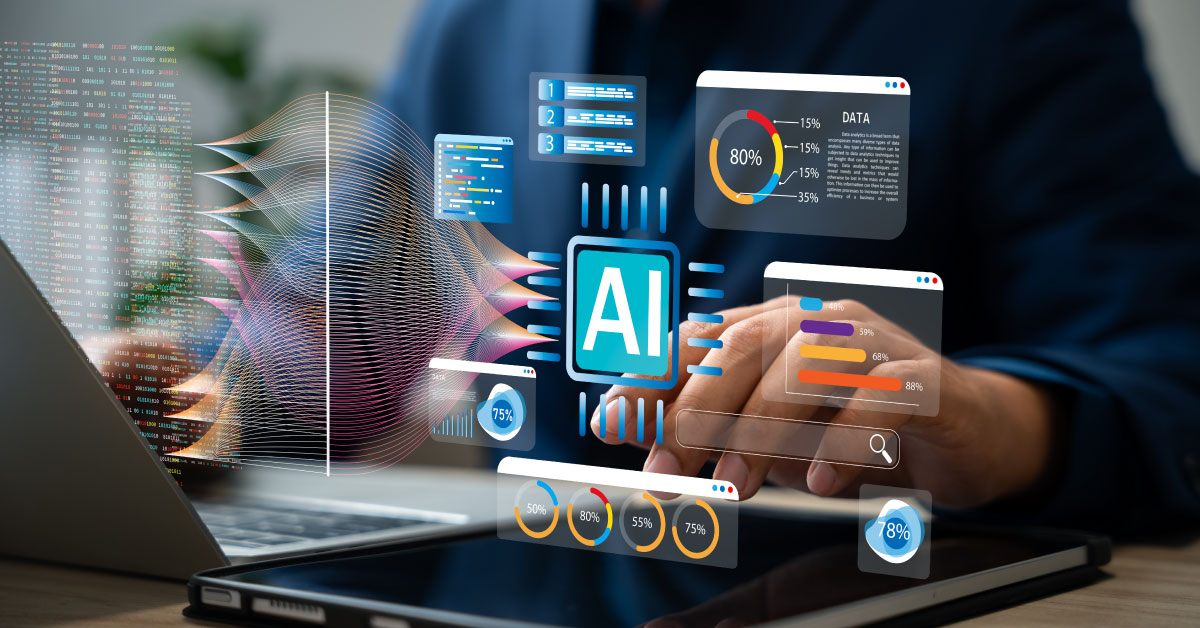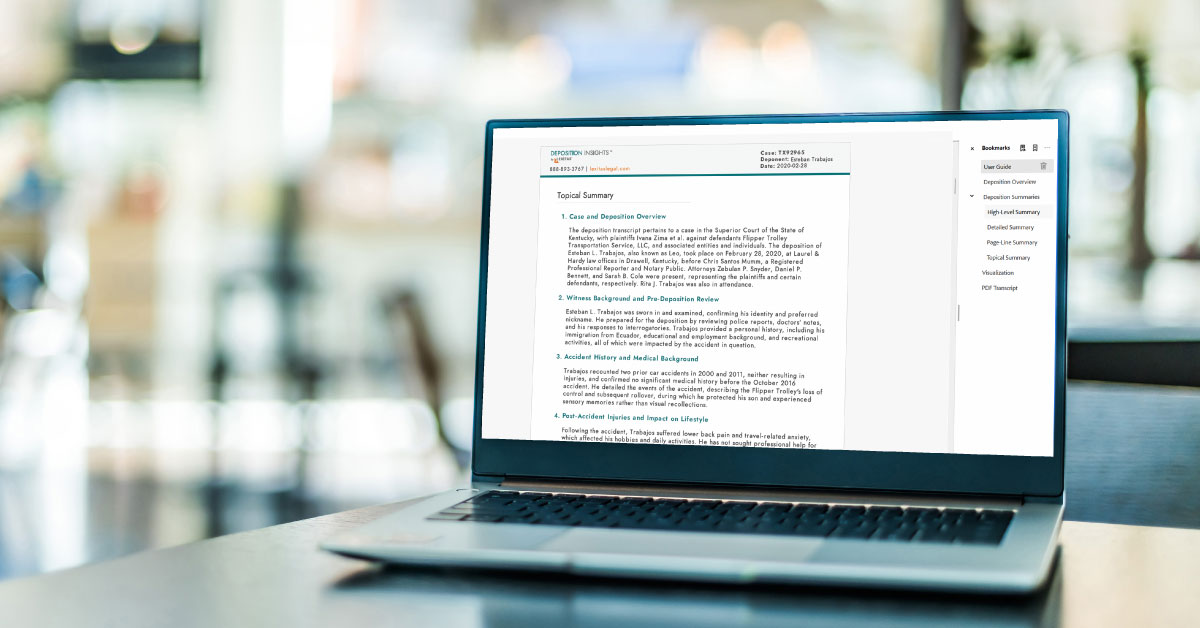Can AI Really Read a Witness?
October 16, 2025
Technology
From Eye Contact to Microexpressions: Can AI Really Read a Witness?
New AI-enabled behavioral analysis tools are being developed that help attorneys better understand how a witness is responding—not just to what they’re being asked, but how they’re answering. Behavior is the richest data set that can be developed and harnessing the power to interpret that data gives attorneys a powerful advantage.
AI in the Courtroom?
In recent years, legal professionals have questioned whether AI can be tapped for use inside the courtroom, for such things as jury selection. AI is already being used for combing through voluminous data on social media platforms, public records, and other online locations to find information that might indicate a person’s eligibility as a potential juror. Depositions are another area that may benefit from AI analysis.Today’s depositions provide hours of high-quality video—two to six hours of a person answering questions. It’s a veritable goldmine of data. But every attorney knows how tedious manually reviewing deposition text and video can be, and how easy it is to miss a vital nugget of information.
Lexitas has developed Deposition Insights+, an AI-enabled transcript and video analysis platform that reviews synchronized video using advanced behavioral analytics to decode body language and verbal cues for insights into stress points, confidence levels, and potential discrepancies. Deposition Insights+ can extract up to 30,000 different features from the video, audio, and language data. It analyzes everything from eye and mouth movement to breathing patterns, pauses, tremors, speech rate, and average sentence length. And unlike polygraphs, which match a handful of physiological signals to yes/no answers, this system doesn’t try to declare someone truthful or deceitful.
“People can obfuscate, minimize, change the subject, or sincerely believe something inaccurate,” says Lexitas Chief Innovation Officer Jason Primuth. “What we do know is that when someone’s behavior changes, it’s worth paying attention to.”
Accelerate Case Prep with AI-Driven Transcript & Video Analysis Platform
Patterns, Not Verdicts
The system evaluates each response within the deposition, generating a positive score (0–100) and a negative score (0–100) for that moment. Over the session, it builds a personality profile unique to that witness. Crucially, it’s not comparing the witness to a generic “norm” or to other people—it’s comparing them to themselves in that moment. “If Sally’s deposition is today, I’m only looking at Sally today,” Primuth says. That self-referenced approach makes cultural differences such as norms about eye contact, which can vary from culture to culture, irrelevant to the scoring. It also reduces the risk of AI making false assumptions about what constitutes “normal” behavior.
When people fabricate, minimize, or weave a story, Primuth notes, their behavior changes in ways that “start to not make sense behaviorally.” Deposition Insights+ surfaces those anomalies without making a truth-or-lie declaration, leaving interpretation to the attorney.
Giving Attorneys an Edge
For litigators, the practical payoff is strategic intelligence. If an analysis shows that a witness becomes stressed when discussing the red car in a case, an attorney can adjust tactics—press harder, back off, or give space to encourage rambling.Senior litigators see this AI-enhanced solution as a productivity booster, especially for junior attorneys who are still learning to read witnesses. Over time, Primuth believes, using such solutions likely will become a professional standard.
Fighting Bias in Legal AI
Bias in AI is a hot topic, and rightly so. Studies years ago showed that AI returned higher error rates for certain demographic groups. Many early AI models were trained on narrow datasets from certain types of individuals – highly educated scientists at research universities, for example. Deposition Insights+ video behavioral analysis tackles bias in four technical ways, but the most important safeguard is individualized analysis.By scoring each person only against their own behavior during that deposition, the program sidesteps societal norms or cross-cultural misinterpretations. That also eliminates the inherent bias of human observation, something most people don’t even realize they carry.
“Humans are extraordinarily poor at evaluating other humans,” Primuth says. “We think we’re objective, but we’re not.”
Building Trust
Deposition Insights+ doesn’t rely on one or two cues. It works with tens of thousands of features, integrating them into a nuanced behavioral picture. Comparing it to shallow systems, Primuth says, “It’s the difference between mom putting a Band-Aid on your knee and a Level 1 trauma center. Yeah, they’re both health care, but one is a clearly superior level of care.”What AI Means for the Future of Litigation
Looking ahead, Primuth envisions AI not replacing lawyers, but giving them sharper tools and richer context. The system might one day design custom question sets in real time to help an attorney pursue a case theory. This, of course, raises important questions about regulation, ethics, and professional responsibility.Legal observers are already debating where to draw the line between innovation and oversight. Overregulation could stifle breakthroughs, but under-regulation could allow flawed AI to harm cases. Primuth believes transparency, bias mitigation, and clear limits on interpretation are essential to building trust.
And while he’s optimistic about its democratizing potential—“It’s going to be universally available; access-to-justice issues will go away”—he also warns that users will grow comfortable and start bypassing safeguards. Maintaining oversight, both technical and legal, will be critical.
So Can AI Really Read a Witness?
The short answer, Primuth says, is “sometimes.” But that’s the wrong question. The real value lies not in catching lies, but in understanding behavior in context—seeing where stress, cognitive load, or inconsistency emerges, and using that knowledge strategically to shape a better legal case.In that sense, Deposition Insights+ doesn’t replace an attorney’s judgment. It sharpens it, making the invisible visible. And in a world where tiny shifts in demeanor can sway the outcome of a case, that might be the edge that matters most.
Related Resources

Articles
Technology
AI Adoption in Law Firms: Navigating Challenges and Opportunities for Sustainable Growth
For leaders at law firms, the strategic question isn't whether to adopt AI, it's how to harness the advantages of AI effectively to boost your practice today while your competitors are still evaluating their options.
Read More
Articles
Technology
How AI Is Transforming Deposition Summaries: Part 2
AI is changing the way legal teams approach deposition review. It is no longer just about creating a simple AI-enabled summary.
Read More
Articles
Technology
AI Ethics and Bias in Data Use
The ethical framework around AI in legal practice continues to develop rapidly. Law firms that position themselves as experts in this complex landscape will find new opportunities to serve clients.
Read More